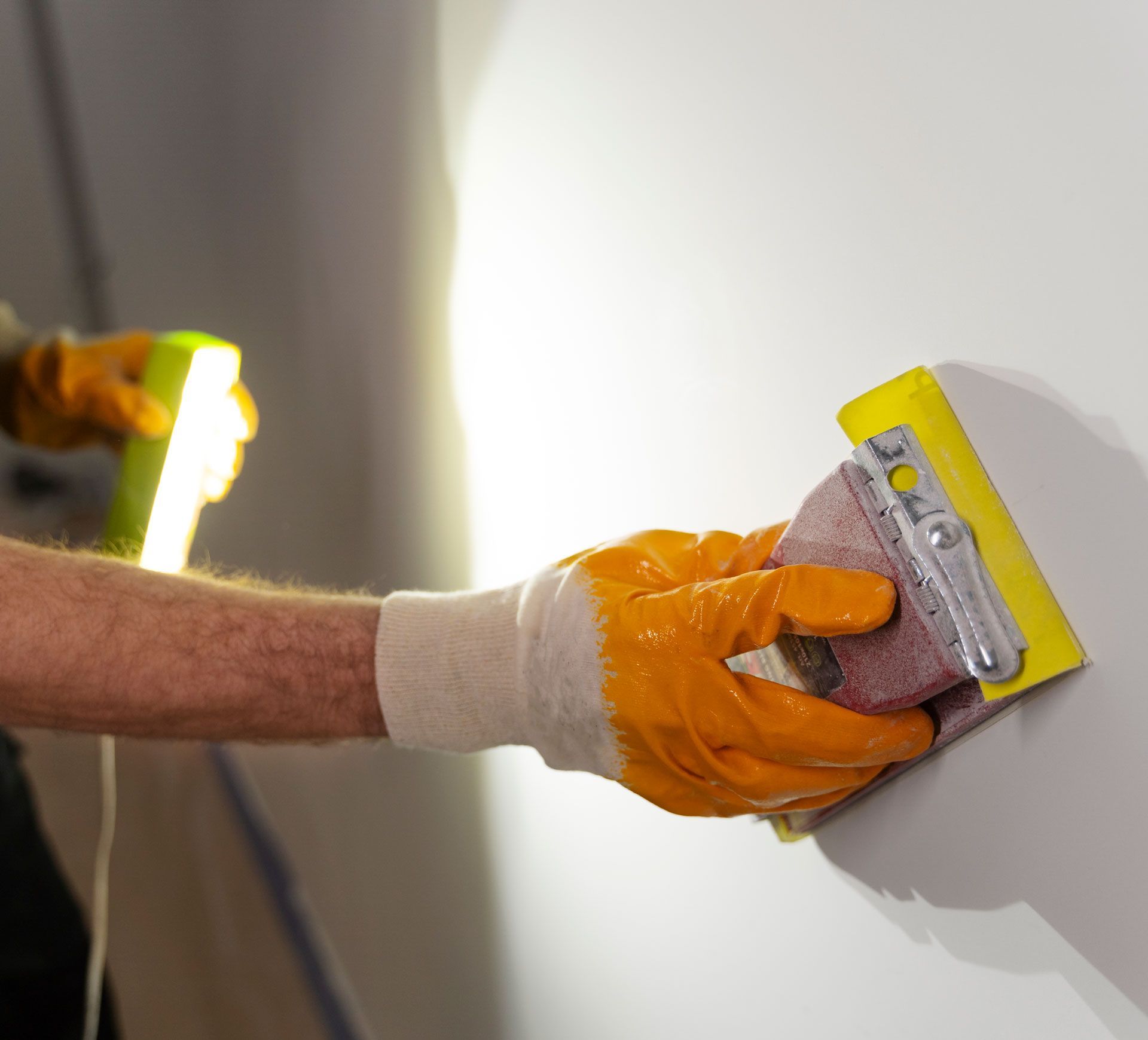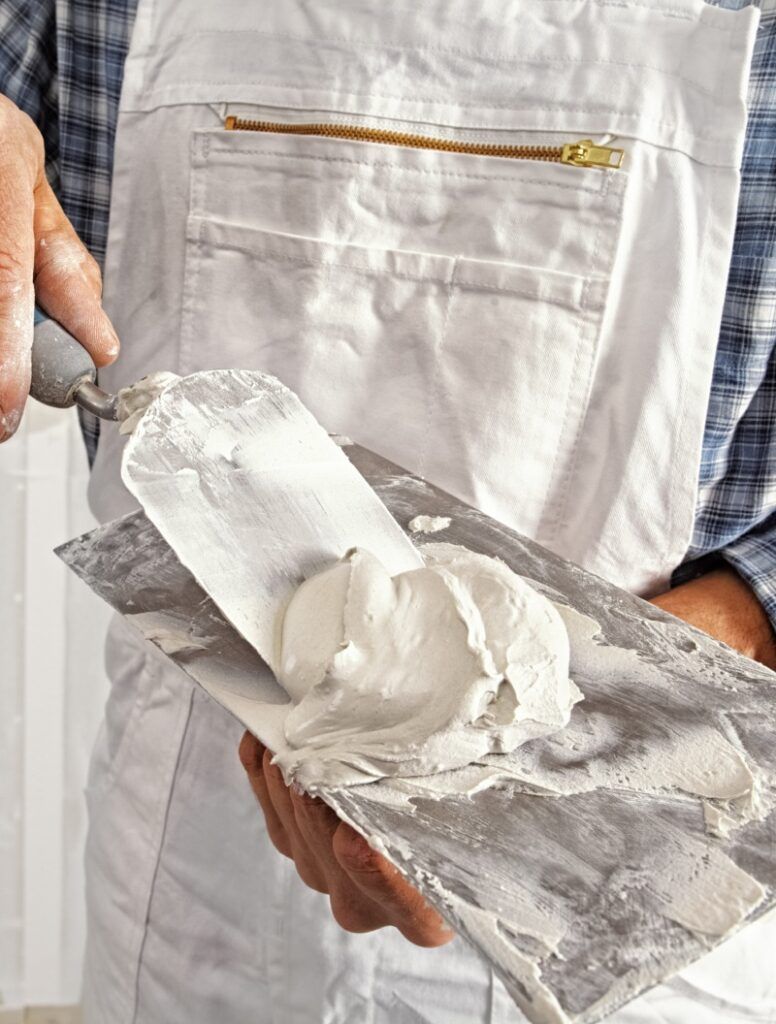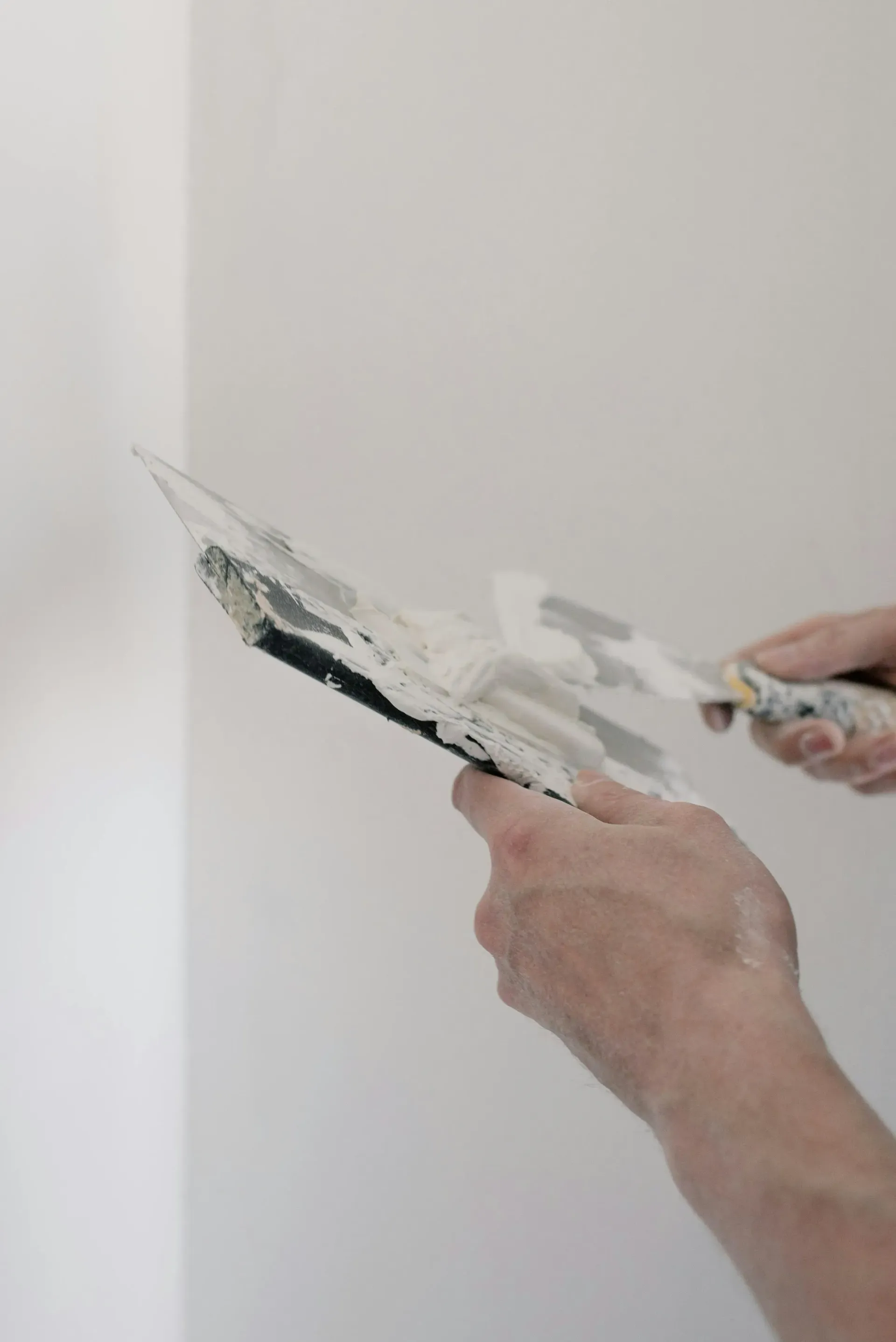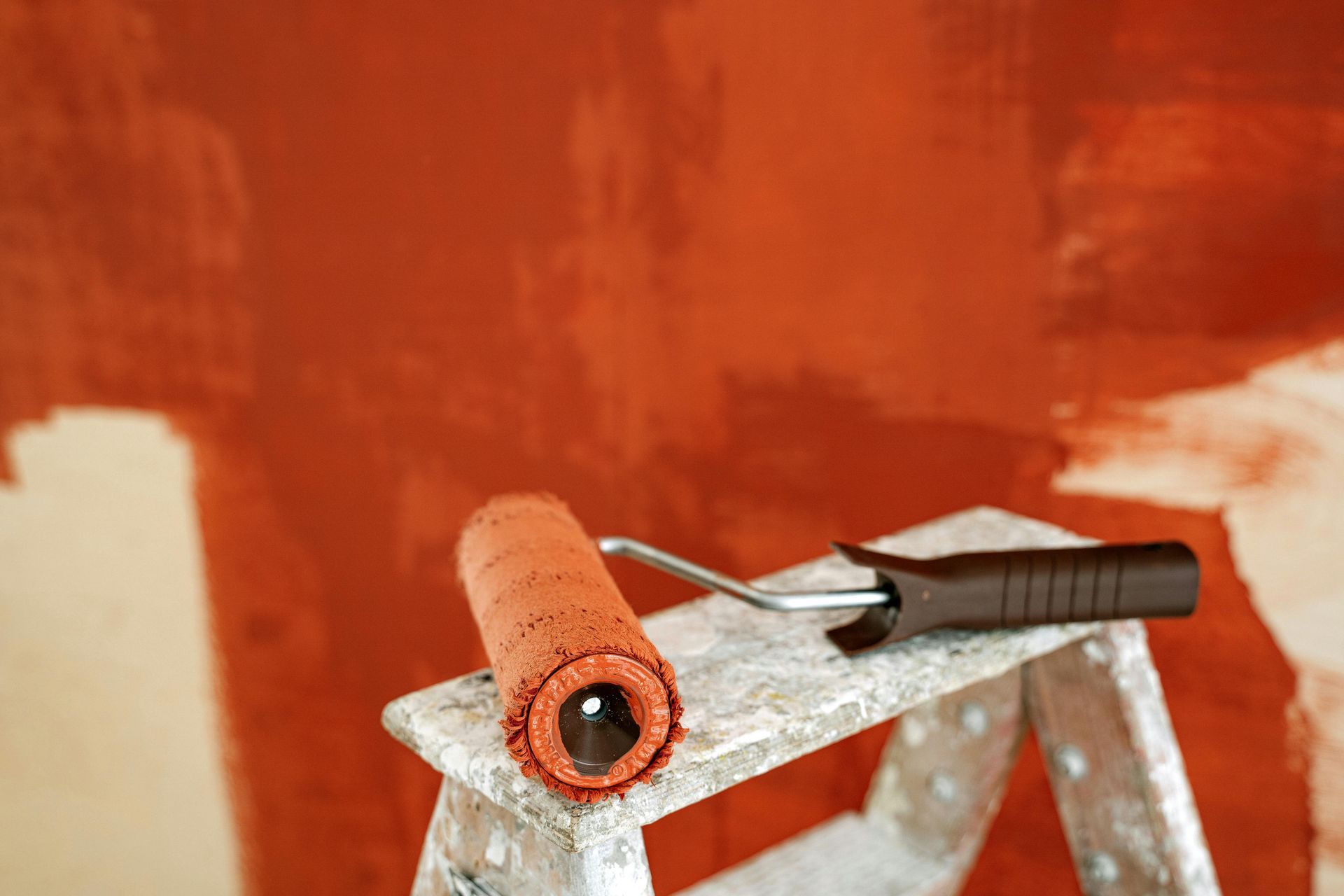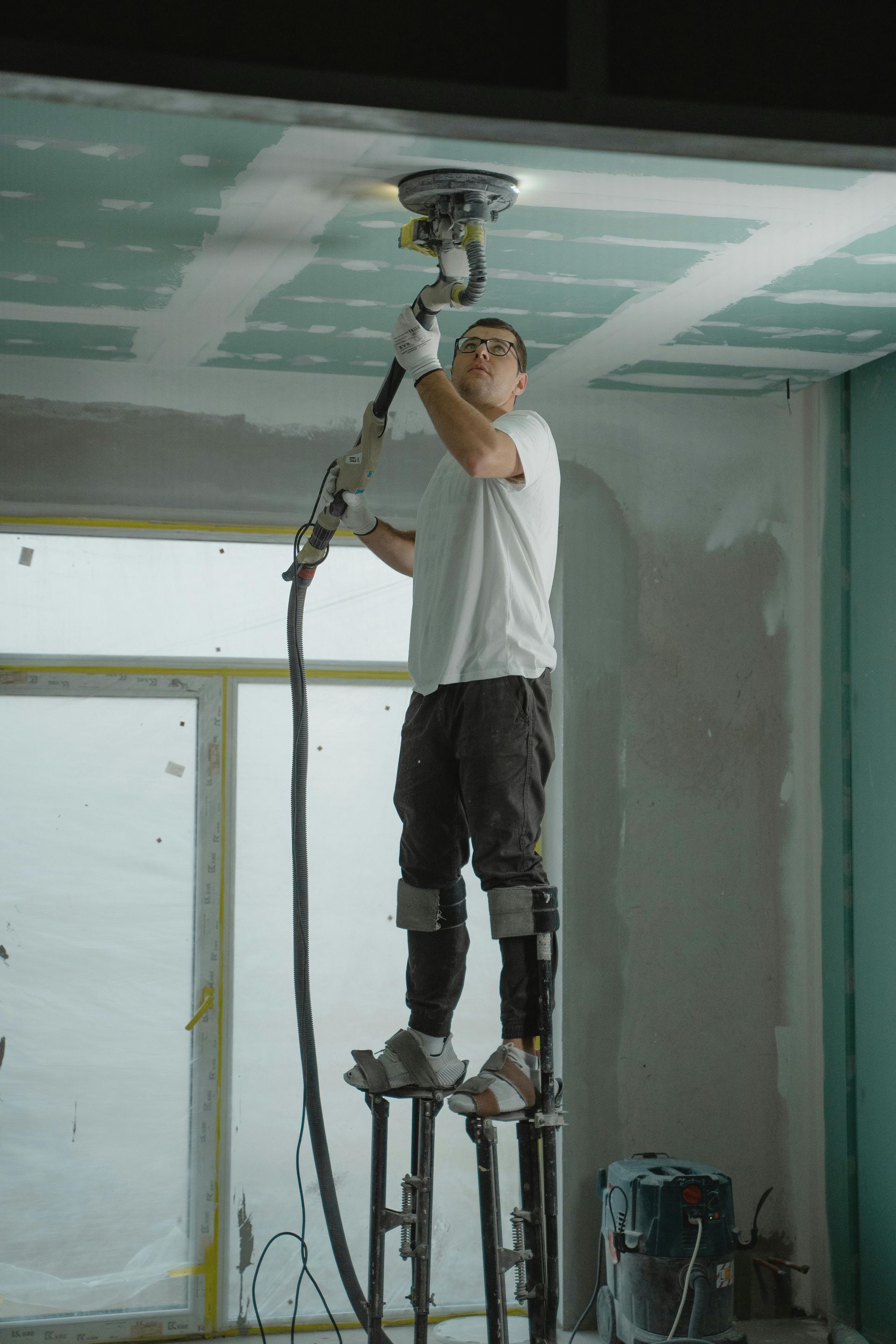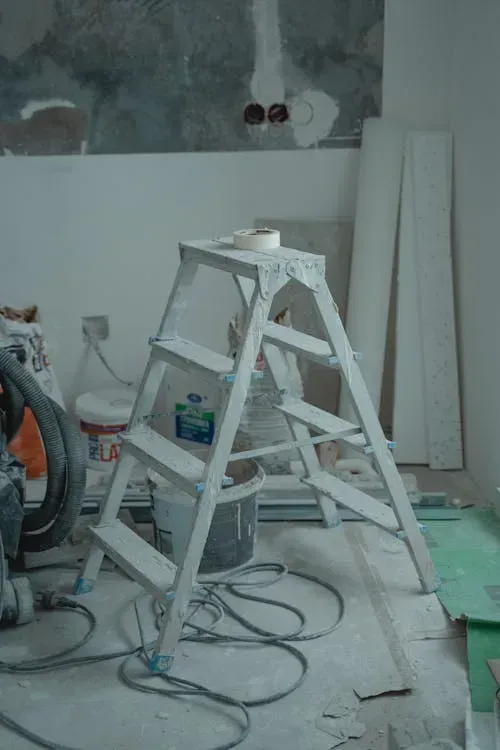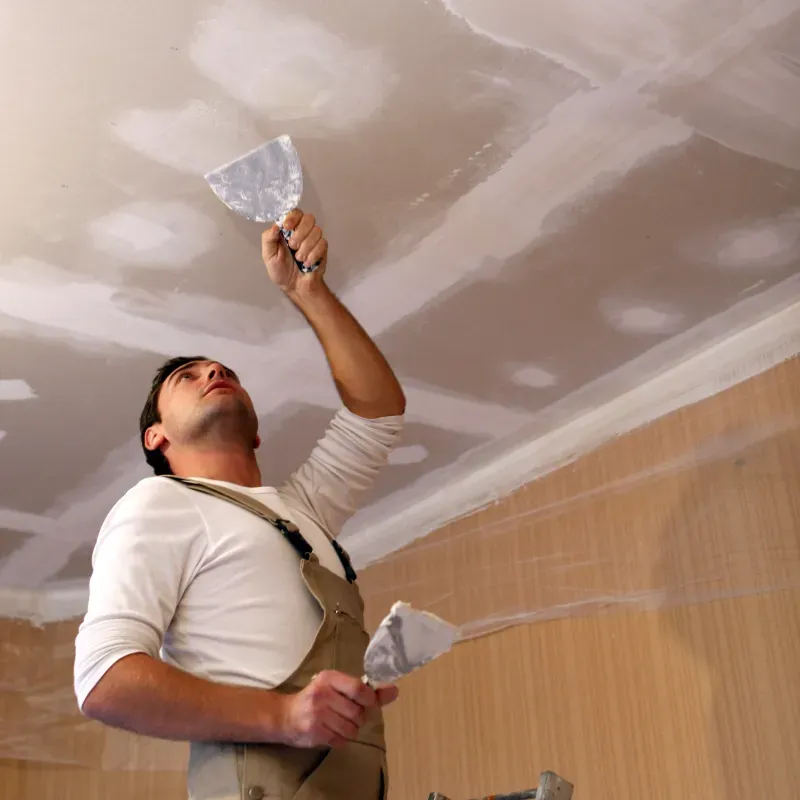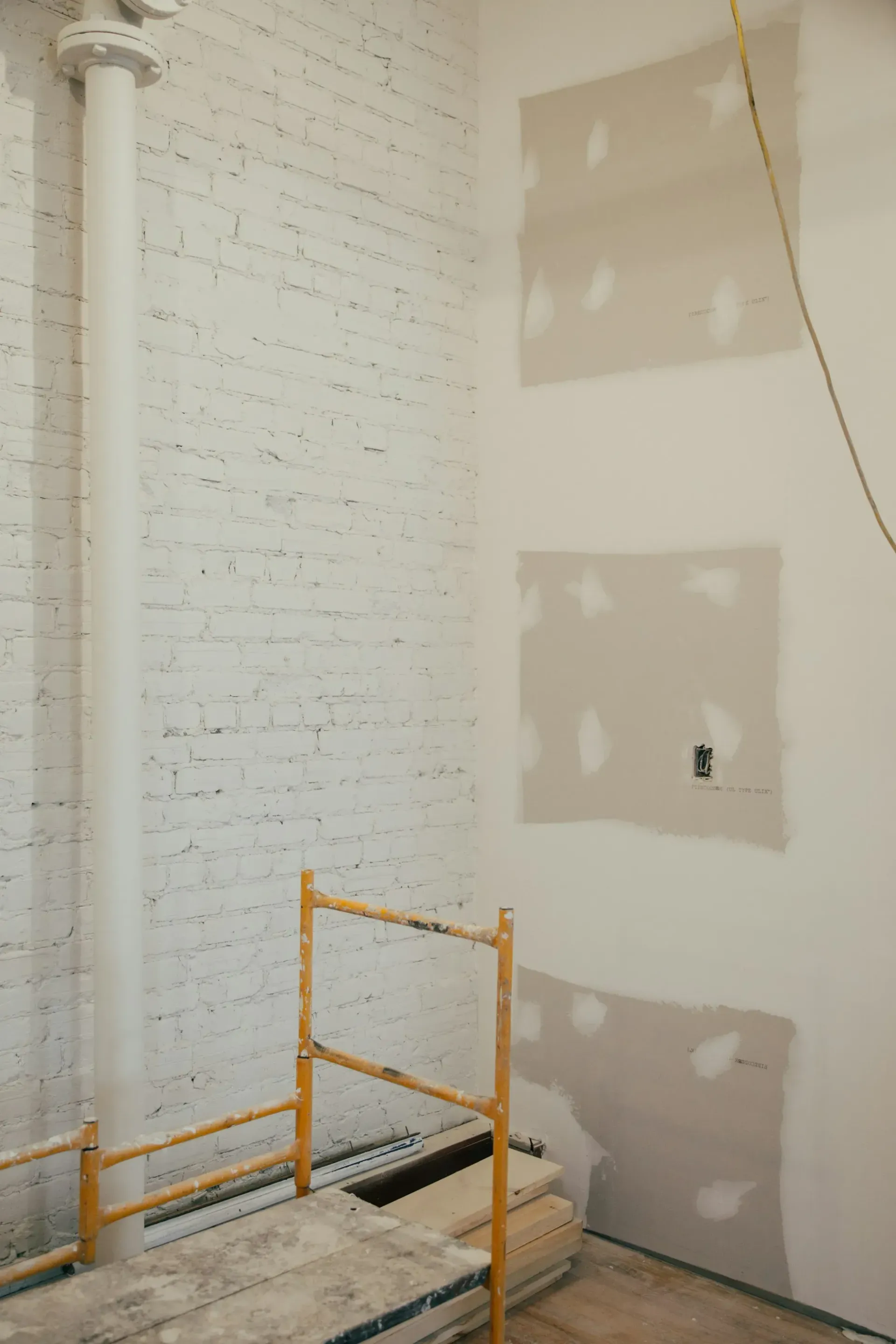
How Much Does Ceiling Repair Work Cost?
Ceiling repairs can catch you off guard, and the price tag isn’t always clear. Whether it’s a small crack or serious water damage, knowing what you’re up against helps you plan better.
In this blog, we’ll walk you through the most common ceiling repairs, what factors drive up the cost, and whether you should tackle it yourself or bring in a pro. You’ll get a clear picture of what different materials cost, how labor plays into the price, and how long these fixes usually take.
If you’re not sure where to start, this guide will make it easier to budget and avoid surprises.
Key Factors Affecting Ceiling Repair Costs
Several factors can affect how much it’ll cost to repair your ceiling. Understanding these can help you avoid overspending and give you a clearer idea of what to expect when you get quotes.
1. Type of Damage
The kind of damage your ceiling has is the biggest factor in determining cost. Small cracks or nail holes are much cheaper to fix than water damage, which can lead to mold or structural issues. The more severe the damage, the higher the cost.
2. Ceiling Material
Different materials mean different price points. Drywall is the most common and usually the cheapest to fix. Plaster, on the other hand, can be more expensive because it requires specialized tools and skills. If you have a popcorn ceiling, repairs can be tricky, especially if you plan to remove it altogether.
3. Size of the Repair
The larger the damaged area, the more you’ll pay. Patching a small hole is a quick job, but if you’re dealing with a large section or multiple areas, the costs go up fast. Bigger jobs also mean more labor time, which adds to the price.
4. Labor Costs
Hiring a professional means paying for their time. Labor costs vary by location, with urban areas often charging more than rural ones. The complexity of the job also matters. If your ceiling is high or hard to reach, expect the labor charges to increase.
5. Location
Where you live plays a role in repair costs. Some regions have higher labor costs or more expensive materials, which will affect the total. Getting a few local quotes can give you a better idea of what you’ll pay.
Ceiling Repair Cost Estimates by Damage Type
The cost of ceiling repair can vary widely depending on the type of damage you're dealing with. Here's a breakdown of some of the most common ceiling repair jobs and what you can expect to pay.
1. Small Hole Patch
- Cost: $50 - $200
If you’re dealing with a small hole or minor crack, the repair is straightforward and inexpensive. These types of fixes usually involve simple patching and repainting. It’s a quick job that a professional can handle in an hour or two.
2. Water Damage Repair
- Cost: $200 - $1,500
Water damage is a bit more complicated. Depending on the severity, you may be looking at costs on the higher end. Water not only damages the ceiling material but can also lead to mold growth, which requires extra work to remove safely. If the leak isn’t fixed, the damage can keep spreading, pushing up the repair costs.
3. Popcorn Ceiling Repair or Removal
- Cost: $1,500 - $4,000
Popcorn ceilings were popular decades ago, but repairing or removing them can be costly. Repairing small areas of a popcorn ceiling can still be affordable, but if you're looking to get rid of it completely, prepare for a bigger price tag. The removal process is labor-intensive and time-consuming, especially if the ceiling contains asbestos.
4. Plaster Ceiling Repair
- Cost: $300 - $1,200
Plaster ceilings are less common these days, but if your home has one, repairs will likely cost more than drywall. Plaster repairs require specialized skills, and not every contractor does this type of work. The final cost will depend on the extent of the damage and how much of the ceiling needs to be fixed.
5. Full Ceiling Replacement
- Cost: $1,000 - $3,000+
If your ceiling is beyond repair or you’re remodeling, replacing the entire ceiling is an option. This is the most expensive route since it involves tearing out the old ceiling, possibly fixing structural issues, and installing a new one. The cost will depend on the size of the room and the type of material you choose.
Cost to Patch a Ceiling: Small vs. Large Areas
The size of the damaged area is a major factor in determining the cost of patching a ceiling. Whether you're dealing with a minor repair or a large patch job, knowing the difference in costs can help you budget appropriately.
1. Small Patch Jobs (1-2 square feet)
- Cost: $100 - $300
For small holes or cracks, the repair is usually quick and inexpensive. Small patches typically require minimal materials and can be completed within an hour. Common causes for this kind of damage include nail pops, minor cracks, or small holes from accidents. If the patch is minor, it may also only require a simple retexturing and paint touch-up, which keeps the costs low.
2. Medium to Large Patch Jobs (5-10 square feet or more)
- Cost: $500 - $1,500
Larger repairs, such as those caused by falling objects, large leaks, or more extensive cracking, will cost more due to the labor and materials required. Bigger patches mean more surface area to fix, which often requires additional steps like cutting out damaged drywall, adding support, and ensuring the new patch blends smoothly with the rest of the ceiling. If the damage is in a hard-to-reach area or involves tricky ceiling textures, expect the price to rise.
3. Potential Additional Costs
- Repainting: After the patch is complete, you’ll likely need to repaint the entire ceiling or at least the affected area. This can add $100 to $500 to the total, depending on the size of the ceiling.
- Retexturing: If your ceiling has a specific texture like popcorn or knockdown, retexturing will also come with additional costs, typically between $200 and $500.
Pro Tip: Always factor in repainting and retexturing when getting estimates, as these can be easy to overlook but add up quickly.
Ceiling Repair by Material: How Much Does Each Type Cost?
The type of ceiling material you have will play a big role in how much your repair will cost. Each material comes with its own set of challenges, and the prices vary based on the tools, techniques, and expertise required to fix them.
1. Drywall Ceiling Repair
- Cost: $50 - $400
Drywall is the most common ceiling material, and it's also the cheapest to repair. If you're patching a small hole or crack, expect costs to be on the lower end. Larger repairs that involve replacing sections of drywall and repainting will increase the price but still remain relatively affordable compared to other materials.
2. Plaster Ceiling Repair
- Cost: $200 - $1,200
Plaster ceilings are often found in older homes and are more difficult and costly to repair. The process involves not only fixing the damage but also blending the new plaster with the old to maintain a seamless look. This requires a skilled professional, which is why plaster repairs are more expensive. If the damage is widespread, the cost will increase significantly.
3. Popcorn Ceiling Repair/Removal
- Cost: $1,500 - $4,000
Popcorn ceilings are tricky to work with. Repairing a small section of a popcorn ceiling can be relatively affordable, but removing it entirely is a different story. Because popcorn ceilings can contain asbestos, removal requires special equipment and safety measures, driving up the cost. Even without asbestos, the removal process is labor-intensive, making it one of the more expensive ceiling projects.
4. Acoustic Ceiling Tile Repair
- Cost: $100 - $500
Acoustic ceiling tiles are typically found in commercial spaces or basements. These tiles are easier to repair or replace, making them a more budget-friendly option. If a single tile is damaged, you can often replace just that tile rather than repairing an entire section, keeping costs low.
Ceiling Water Damage Repair Costs
Water damage is one of the most common and potentially costly ceiling repairs. The cost can range widely depending on how severe the damage is and whether additional issues like mold or structural damage are present.
1. Minor Water Damage
- Cost: $200 - $500
Small water stains caused by minor leaks or condensation are usually the easiest and cheapest to fix. Typically, this involves drying the area, sealing the stain with a special primer, and repainting the ceiling. If the drywall or plaster hasn't been significantly damaged, the repair will stay on the lower end of the cost spectrum.
2. Moderate Water Damage
- Cost: $500 - $1,500
When the water damage is more extensive, such as from a larger leak or prolonged exposure to moisture, the repair gets more complicated. At this level, parts of the ceiling material (drywall or plaster) may need to be cut out and replaced. If mold has started to form, the job may also require mold remediation, which increases the total cost. Depending on how widespread the damage is, these repairs can take a few days.
3. Severe Water Damage
- Cost: $1,500 - $3,000+
Severe water damage, like from a burst pipe or flooding, often leads to structural issues. In this case, repairing the ceiling isn’t enough—you may also need to fix the source of the water and address any structural problems it caused. This can involve tearing out and replacing large sections of the ceiling, dealing with mold, and fixing underlying issues in the attic or roofing. This is the most expensive level of water damage repair and usually involves multiple contractors.
Pro Tip: Always make sure the source of the water is fixed before repairing the ceiling. Otherwise, you risk having to pay for another repair down the line.
DIY Ceiling Repair vs. Hiring a Professional: What’s the Cost Difference?
When it comes to ceiling repairs, you might wonder whether you should take a DIY approach or call in a professional. Both options have their pros and cons, and the cost can vary significantly depending on your skill level and the scope of the damage.
1. DIY Ceiling Repair
- Cost: $50 - $300 (materials)
For minor ceiling repairs, like patching small holes or fixing hairline cracks, DIY can save you a lot of money. You’ll only need basic materials like spackle, drywall tape, sandpaper, and paint. If you’re comfortable using these tools and the damage is small, DIY could be a good option. However, there’s a risk of not getting the finish right, which can affect the appearance of the ceiling and require additional fixes down the road.
- Pros:
- Saves money on labor
- Ideal for small, easy-to-repair damage
- You control the timeline
- Cons:
- Requires time and effort
- Risk of improper repairs
- Might still need a pro if the repair doesn’t hold up
2. Professional Ceiling Repair
- Cost: $300 - $1,000+
Hiring a professional is the better choice for larger repairs, water damage, or any job involving specialty materials like plaster or popcorn ceilings. Professionals bring expertise and the right tools to the job, ensuring the repair is done correctly and looks seamless. Though the upfront cost is higher, it often saves you from potential mistakes and future problems.
- Pros:
- High-quality, long-lasting repairs
- No hassle of buying or renting tools
- Faster and more efficient than DIY
- Cons:
- Higher cost upfront
- You’re on the contractor’s schedule
When to Choose DIY vs. Hiring a Professional
If the damage is minor and you’re confident in your repair skills, DIY could be a cost-effective option. But for anything more complex—especially if it involves water damage or ceiling textures like popcorn—it's worth hiring a pro to ensure the job is done right.
Ceiling Repair Labor Costs: What to Expect?
Labor costs are one of the biggest factors when it comes to the overall price of ceiling repairs. Depending on the complexity of the job, where you live, and the contractor you hire, these costs can vary significantly.
1. Average Labor Costs by Location
- Urban Areas: $75 - $150 per hour
In cities, labor costs tend to be higher due to increased demand and higher living costs. Expect to pay more per hour if you're in a major metropolitan area. - Rural Areas: $50 - $100 per hour
In rural areas, labor tends to be more affordable, but you may have fewer contractors to choose from, which could impact availability.
2. Complexity of the Job
- Basic Repairs (small holes, cracks): 1-2 hours of labor
For simple jobs like patching a small hole or fixing a crack, you’ll likely only need a contractor for a couple of hours. These basic repairs usually come in on the lower end of labor costs. - Moderate Repairs (water damage, retexturing): 3-6 hours of labor
Water damage or repairs that require retexturing the ceiling take more time and skill. This type of work often falls in the middle range of labor costs, as it involves additional steps like ensuring the area is dry, removing damaged sections, and making sure the texture matches the rest of the ceiling. - Major Repairs (ceiling replacement, structural fixes): 1-2 days of labor
Larger jobs, such as replacing an entire ceiling or fixing structural issues, will require more labor time and specialized skills. These projects often involve multiple workers and take more than a day to complete, leading to higher labor costs.
3. Accessibility and Ceiling Height
If your ceiling is particularly high or difficult to access, such as in vaulted or cathedral-style rooms, labor costs will increase. Contractors may need to use scaffolding or other special equipment, which adds both time and cost to the project.
Pro Tip: Get multiple quotes from contractors in your area to ensure you're getting a fair price. Make sure each quote breaks down labor and materials separately, so you know exactly what you’re paying for.
Is Ceiling Repair Covered by Insurance?
One of the most important questions homeowners ask when faced with ceiling damage is whether their insurance will cover the repair costs. The answer depends on the cause of the damage and the details of your homeowner's insurance policy.
1. When Insurance Covers Ceiling Repair
Insurance typically covers ceiling repair if the damage is caused by a sudden, unexpected event. These are known as "covered perils" and can include:
- Water Damage from Burst Pipes: If a pipe bursts and causes significant water damage to your ceiling, insurance should cover the repair costs, provided the damage was sudden and not due to neglect.
- Storm Damage: If a severe storm causes a tree to fall through your roof, damaging your ceiling, this is generally covered under a standard homeowner’s policy.
- Fire or Smoke Damage: Fire and smoke damage to the ceiling are almost always covered by insurance.
2. When Insurance Doesn’t Cover Ceiling Repair
Not all ceiling damage is covered by insurance. Common exclusions include:
- Wear and Tear: If your ceiling is damaged due to old age or lack of maintenance, your insurance won’t pay for the repair. Routine maintenance is your responsibility as a homeowner.
- Neglect: If you knew about a problem, like a leaky roof, and failed to fix it, the insurance company may deny your claim, even if the damage worsens over time.
3. Filing a Claim for Ceiling Repair
If you believe your ceiling damage is covered, follow these steps to file a claim:
- Document the Damage: Take photos and videos of the ceiling damage to provide evidence to your insurance company.
- Fix the Cause of the Damage First: Whether it’s a leaky roof or a burst pipe, make sure the problem causing the damage is fixed before the ceiling is repaired. Your insurance may require proof that you’ve addressed the underlying issue.
- Get an Estimate: Many insurance companies will ask for an estimate from a licensed contractor. Be sure to get a detailed quote outlining the repair costs.
- Submit Your Claim: Contact your insurance provider to begin the claims process. They may send an adjuster to assess the damage.
Pro Tip: Keep in mind that even if your ceiling damage is covered, you may still need to pay a deductible before insurance kicks in. Make sure to review your policy for details.
How Long Does Ceiling Repair Take?
The amount of time it takes to repair a ceiling depends on the type and extent of the damage. Simple fixes can be done quickly, while more complicated repairs, like addressing water damage or replacing large sections, can take several days.
1. Small Patches
Timeframe: 1-2 hours
Minor repairs, like filling in small holes or cracks, are usually quick jobs. Most contractors can patch, sand, and repaint a small area in just a couple of hours. If you're handy, this can be a quick DIY project as well.
2. Moderate Damage (e.g., Water Damage or Retexturing)
Timeframe: 1-2 days
Moderate ceiling repairs, such as fixing water damage or retexturing a portion of the ceiling, take more time. The area needs to be dried thoroughly before repairs can begin. In some cases, multiple layers of drywall or plaster may need to be replaced, which extends the time required. If retexturing is involved, additional time will be needed for the texture to dry and blend with the rest of the ceiling.
3. Large Repairs or Ceiling Replacements
Timeframe: 3-5 days
Large-scale repairs, such as replacing an entire ceiling, can take several days to complete. The old ceiling material has to be torn down, debris cleared, and new drywall or plaster installed. Painting and retexturing add more time, especially if the space is large or has hard-to-reach areas. This process may also require scaffolding or other equipment, depending on the ceiling height.
4. Additional Drying Time for Water Damage
If your ceiling repair involves water damage, be aware that the drying time for the damaged area can take anywhere from a few hours to a few days, depending on the extent of the damage and the climate. Contractors may use fans or dehumidifiers to speed up the drying process.
Pro Tip: Ask your contractor for an estimated timeline before starting the repair. This way, you can plan around the work and minimize disruption to your routine.
Conclusion
Ceiling repairs can range from quick fixes to major projects, and understanding the costs involved is crucial for planning and budgeting. Whether you're dealing with small cracks, water damage, or an entire ceiling replacement, being informed will help you make the right decisions for your home.
If you're in South Central PA and need professional help with your ceiling repair, consider Patch Boys of South Central PA. Located in Hershey, Patch Boys offers a variety of drywall services, including:
- Drywall Services
- Skim Coating
- Ceiling Repair
- Patching
- Installation and Framing
With a focus on quality craftsmanship and customer satisfaction, Patch Boys is your trusted local partner for ceiling repairs and drywall needs. Whether you're in Harrisburg, Hershey, Gettysburg, Lancaster, York, Reading, or Chambersburg, their skilled team is ready to help transform your space.
Contact Patch Boys of South Central PA today to get a quote and experience top-notch drywall and ceiling repair services. Let the experts take care of your home improvement projects with precision and care.

